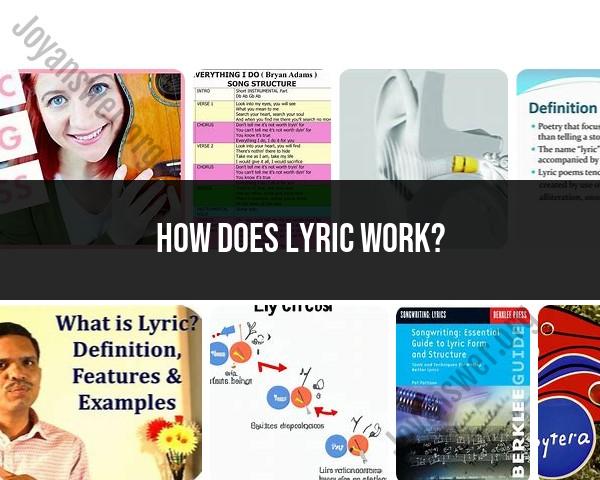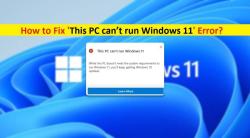How does lyric work?
The functioning of lyrics, particularly in the context of music or song lyrics, involves the composition, arrangement, and delivery of words synchronized with musical elements. Here's how it generally works:
Composition: Lyric writing involves composing words that convey a message, tell a story, evoke emotions, or express ideas within the structure of a song. Lyricists craft verses, choruses, bridges, or refrains that fit rhythmically and thematically with the music.
Synchronization with Music: Lyrics are synchronized with the musical elements, including melody, rhythm, and harmony. The cadence and phrasing of the lyrics often match the tempo and meter of the music.
Narrative or Emotional Expression: Lyrics serve as a vehicle for storytelling or emotional expression within a song. They can convey themes, narratives, feelings, or abstract concepts, enhancing the listener's connection to the music.
Structural Components: Songs typically have structures such as verses, chorus, pre-chorus, bridge, etc. Each section of the song may contain specific lyrical content that contributes to the song's overall composition and progression.
Performance and Delivery: Vocalists or performers deliver the lyrics through singing or rapping, interpreting the words with expression, emotion, and phrasing that aligns with the music and the intended message.
Impact and Interpretation: Lyrics have the power to resonate with listeners, evoke emotions, convey social messages, or tell stories that connect with diverse audiences. The interpretation of lyrics can vary among listeners, contributing to their personal connection with the music.
Evolution of Lyric Writing: Lyric writing is an evolving art form that adapts to various genres, cultural influences, and artistic expressions. From poetic and metaphorical lyrics to straightforward storytelling, the style and content of lyrics continue to evolve with time and trends.
Overall, the functionality of lyrics in music involves a harmonious blend of words, melody, and emotional expression that collectively contribute to the impact and essence of a song. It's a creative process that integrates language, rhythm, and musicality to create a cohesive and engaging musical experience for the audience.
How does the process of generating lyrics function within a lyric generator tool?
Lyric generator tools utilize a fascinating blend of techniques to churn out words that rhyme and hopefully, resonate with your musical vision. Here's a breakdown of the process:
1. Data Input and Analysis:
- Base Materials: The tool often starts with a vast corpus of song lyrics, poems, or other text data related to music. This database provides the raw material for generating lyric fragments and sequences.
- Analysis and Segmentation: The text data is analyzed for patterns, such as recurring word pairings, rhyming relationships, and common grammatical structures within musical contexts.
2. Idea Generation and Combination:
- Topic and Style Input: You may provide the tool with keywords, a theme, or even a musical genre as inspiration. This helps focus the lyric generation within a specific context.
- Markov Chains: The tool might utilize statistical models like Markov chains to predict the next word based on the sequence of words analyzed from the data. This creates a probabilistic framework for generating lyric fragments.
- Pattern Matching and Rhyming: The tool searches for rhyming words and phrases within the analyzed data and tries to combine them creatively, drawing inspiration from existing song structures and rhythms.
3. Filtering and Refinement:
- Grammatical Consistency: The generated lyrics are analyzed for grammatical accuracy and sentence structure. The tool may apply grammar rules and sentence correction algorithms to ensure coherence.
- Meaning and Sentiment: Some tools employ sentiment analysis techniques to adjust the emotional tone of the lyrics based on your input or desired mood.
- Human Intervention: Depending on the tool's sophistication, you may be able to fine-tune the generated lyrics, modify word choices, or adjust the overall flow and meaning to your liking.
4. Output and Iteration:
- The Final Verse: Ultimately, the tool delivers a set of lyrics based on the combined results of these processes. You can then choose the option that resonates most with you or continue tweaking and iterating through further suggestions.
It's important to remember that lyric generators are still evolving and often lack the creative spark and emotional depth of a human songwriter. However, they can be valuable tools for brainstorming ideas, overcoming writer's block, or exploring new rhythmic and rhyming possibilities. As technology advances, the lines between AI-generated and human-written lyrics may continue to blur, offering exciting possibilities for musical creation in the future.
I hope this peek inside the process of lyric generation inspires you to unleash your inner songbird, whether with the help of AI or through your own creative fire!













